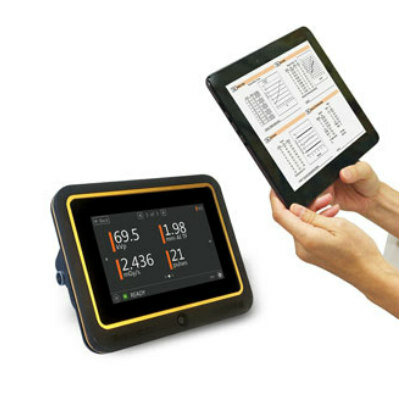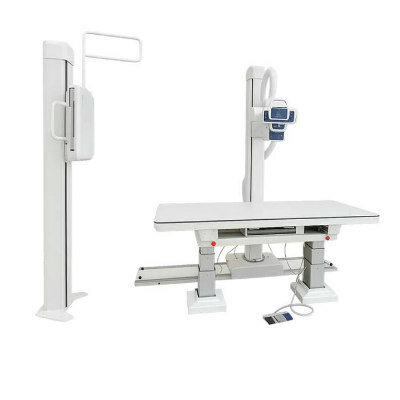Computer-Controlled Couch Used to Direct Radiotherapy to Tumors
By MedImaging International staff writers
Posted on 16 Jan 2014
Swiveling patients around on a computer-controlled, rotating table could deliver high doses of radiotherapy to tumors more rapidly than current technology, while sparing vulnerable organs such as the eyes, heart, brain, and bowel. Posted on 16 Jan 2014
Sophisticated computer modelling has been devised to slowly move the table, known as a couch, and a radiation source in three dimensions to direct radiation right to the patient’s tumor. A radiotherapy table currently can be angled during treatment, but there is no way to synchronize its rotation with a moving radiation beam. However, with some alterations, an upgraded system could move both the patient and the beam while reducing the radiation dose of healthy tissue.
A team of researchers from the Institute of Cancer Research, London (ICR; UK) and the Royal Marsden NHS (National Health Service) Foundation Trust (London, UK) modelled the effectiveness of the technique using data from four patients with different cancers close to major organs and found it could substantially cut the amount of radiation delivered to healthy tissue. The study was published November 7, 2013, in the journal Physics in Medicine and Biology.
In breast cancer, the average radiation dose to the heart could be reduced by 53% compared with radiotherapy without the new technique. In a patient with a brain tumor, maximum calculated doses to the left and right eye lenses decreased by 61% and 77% respectively, and by 37% and 40% to the left and right eyes, respectively.
The technique could slash the average dose a prostate cancer patient’s bowel is exposed to by 15%. Patients with advanced prostate cancer, where the pelvic nodes are also treated, could see the volume of their bowel exposed to radiation lowered by as much as 45%. This next-generation radiotherapy technique, known as dynamic couch rotation volumetric-modulated arc therapy (DCR-VMAT), would use a beam of radiation, which would move around the patient, while also moving the patient table simultaneously. Clinicians could control the angle of the beam, the dose rate and the shape of the beam, and limit the radiation dose to the patient’s healthy organs.
Because the technique is so new, little research has been conducted about how to coordinate the patient’s movement with the radiation source to minimize organ exposure while treating tumors in different parts of the body. This is the first study using sophisticated computer modelling to directly optimize the technique.
Researchers at the ICR and The Royal Marsden used computer modelling of the path of the radiation beam to produce maps showing the amount of radiation from the moving source that intersected with healthy organs near the patient’s tumors. They cross-referenced this with every possible orientation of the table in relation to the beam to calculate how to move the patient during DCR-VMAT to minimize the radiation dose to healthy organs.
Study leader Dr. James Bedford, lead clinical research physicist in the joint department of physics at the Institute of Cancer Research, London and The Royal Marsden NHS Foundation Trust, said, “Radiotherapy continues to improve as new ways of directing radiation to the tumor while sparing the critical structures are found. The outcome of radiotherapy depends very much on the type of cancer and where it is located in the body. This technique allows us to maximize the dose to the tumor while steering the radiation beam around the sensitive normal tissues. It will be of particular value for patients whose tumors are located near to radiation-sensitive organs.
“Although other high-tech radiotherapy systems exist, they are only available at a few sites around the UK, and the time taken to treat the patient is considerable. The advantage of our proposed system is that it improves on radiotherapy machines already widely available—it’s the natural progression for these devices. The new technique could provide precision radiotherapy that would be easier to implement in every radiotherapy facility in the country. Furthermore, treatment would only take a few minutes, which is more comfortable for the patient and improves accuracy.”
Prof. Alan Ashworth, chief executive of the Institute of Cancer Research, London, said, “Research into physics has played an important but largely unheralded role in advancing cancer treatment, with around 40% of cancer survivors having received radiotherapy. Our physicists are developing cutting-edge techniques to deliver doses of radiation to tumors more precisely. This work could substantially reduce the amount of harmful radiation patients' healthy organs are exposed to, allowing us to hit the cancer with higher and more effective doses of treatment.”
Dr. Imogen Locke, lead for clinical oncology at the Royal Marsden, said, “This research has the exciting potential to translate into significant clinical benefit for patients by reducing some of the long-term effects of radiotherapy on healthy tissue. Delivering radiotherapy using advanced rotational techniques also allows treatment to be targeted more accurately and delivered more rapidly.”
Related Links:
Institute of Cancer Research, London Institute of Cancer Research, London
Royal Marsden NHS Foundation Trust














